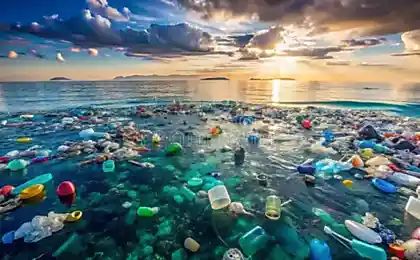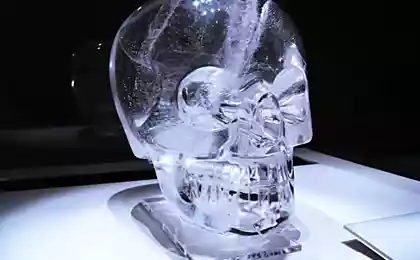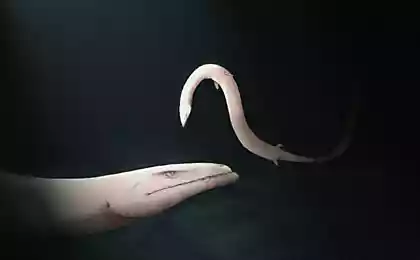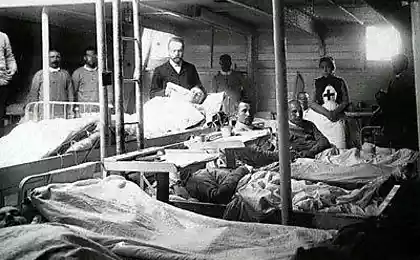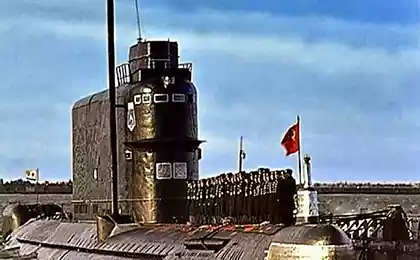3175
Strange and unexplained sounds of the Pacific Ocean
Office of NOAA (National Oceanic and Atmospheric Administration; approx. Mixednews.ru) registered in the depths of the Pacific Ocean sounds, the origin of which can not be explained. For over twenty years, scientists have recorded and analyzed the noise of the oceans. They recorded the sounds of seismic activity, marine animals, noise, moving ice masses. However, the origin of some of them to explain still not possible. Have been put forward various theories, which included marine life, the instability of the ice cover, and even UFOs.

Sound called "Roar»

NOAA detected the sound in 1997, he sounded at ultra-low frequencies and was incredibly powerful. He was spotted in a very remote area of the Pacific Ocean, which lies to the south-west of South America. Sound character suggests that its source was an animal, but animals are not known to science can produce sounds of this nature, in addition, the volume of "roar" several times higher than any known animal noises. "Roar" was simultaneously recorded several hydrophones, remote from each other by five thousand kilometers, making it the most remote from the ever heard the sounds of the ocean.
Sound "Julia»
It was registered NOAA March 1, 1999, its duration was about fifteen seconds. This noise came from the equatorial Pacific, the source was somewhere between Easter Island and South America. The sound of "Julia" was just very loud and was recorded by hydrophones separated by a distance of more than five thousand kilometers.
Sound called "Slowing»

This sound NOAA registered 19 May 1997, it lasted about seven minutes. He was named to slow down, because its height is decreased continuously for seven minutes. Since 1997, the noise was repeated almost every year, the location of its source identified just north of Easter Island, near the Pacific equator. Scientists hypothesized origin of sound "Slow down," but it has not been confirmed. Its sound resembles the movement of the Antarctic ice masses, but the location of the source rule out the presence of ice in there any time of year, so the discussion is still open.
Sound, named "Train»
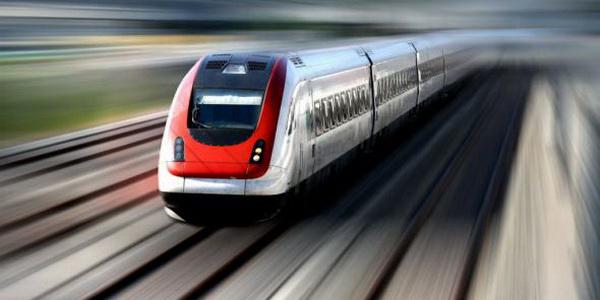
The sound was also recorded NOAA in the equatorial Pacific Ocean, just south of Easter Island. At the sound dominated the regular increase in the volume and height to fixed limits, that is consonant with train whistles.
Sound "Climbing»
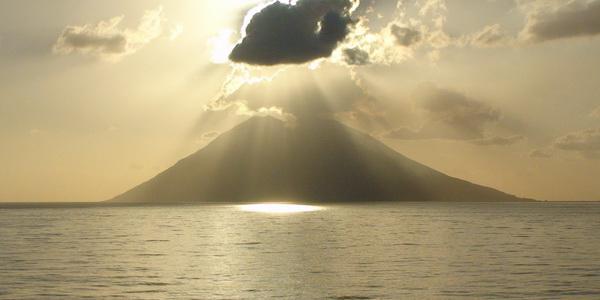
It was recorded NOAA in August 1991 and consists of a set of repetitive sound waves with fast rise of frequencies. Since the discovery of the sound recorded annually, but the frequency and volume each time has been in decline. There is a seasonal pattern - the highest frequency sound reaches the spring and fall. The sound source is located in the Pacific Ocean, north of Antarctica, about halfway between New Zealand and South America. Scientists speculate about the nature of the seismic noise and associate it with the appearance of volcanic activity in the region.
Sound called "Whistle»

This sound is detected July 7, 1997, and registered it was only one hydrophone sensor. This is very unusual, since all of the above sounds are entrained, at least four different sensors simultaneously. The sound source is located in the equatorial Pacific Ocean, about five hundred miles (approximately 800 kilometers; approx. Mixednews.ru) from Mexico City. The sound resembles that of the whistle and usually lasts for about a minute. "Whistle" is recorded each year since the discovery.
All these unexplained noises come from the depths of the Pacific. Can have long wondered what serves their sources: animals, seismic activity or even a UFO? The good news is that the answer can not bring myself to wait, because
NOAA is developing a new high-tech hydrophone sensors. Their sensitivity is more than a hundred times greater than the possibility of hydrophones used now.

Sound called "Roar»

NOAA detected the sound in 1997, he sounded at ultra-low frequencies and was incredibly powerful. He was spotted in a very remote area of the Pacific Ocean, which lies to the south-west of South America. Sound character suggests that its source was an animal, but animals are not known to science can produce sounds of this nature, in addition, the volume of "roar" several times higher than any known animal noises. "Roar" was simultaneously recorded several hydrophones, remote from each other by five thousand kilometers, making it the most remote from the ever heard the sounds of the ocean.
Sound "Julia»
It was registered NOAA March 1, 1999, its duration was about fifteen seconds. This noise came from the equatorial Pacific, the source was somewhere between Easter Island and South America. The sound of "Julia" was just very loud and was recorded by hydrophones separated by a distance of more than five thousand kilometers.
Sound called "Slowing»

This sound NOAA registered 19 May 1997, it lasted about seven minutes. He was named to slow down, because its height is decreased continuously for seven minutes. Since 1997, the noise was repeated almost every year, the location of its source identified just north of Easter Island, near the Pacific equator. Scientists hypothesized origin of sound "Slow down," but it has not been confirmed. Its sound resembles the movement of the Antarctic ice masses, but the location of the source rule out the presence of ice in there any time of year, so the discussion is still open.
Sound, named "Train»

The sound was also recorded NOAA in the equatorial Pacific Ocean, just south of Easter Island. At the sound dominated the regular increase in the volume and height to fixed limits, that is consonant with train whistles.
Sound "Climbing»

It was recorded NOAA in August 1991 and consists of a set of repetitive sound waves with fast rise of frequencies. Since the discovery of the sound recorded annually, but the frequency and volume each time has been in decline. There is a seasonal pattern - the highest frequency sound reaches the spring and fall. The sound source is located in the Pacific Ocean, north of Antarctica, about halfway between New Zealand and South America. Scientists speculate about the nature of the seismic noise and associate it with the appearance of volcanic activity in the region.
Sound called "Whistle»

This sound is detected July 7, 1997, and registered it was only one hydrophone sensor. This is very unusual, since all of the above sounds are entrained, at least four different sensors simultaneously. The sound source is located in the equatorial Pacific Ocean, about five hundred miles (approximately 800 kilometers; approx. Mixednews.ru) from Mexico City. The sound resembles that of the whistle and usually lasts for about a minute. "Whistle" is recorded each year since the discovery.
All these unexplained noises come from the depths of the Pacific. Can have long wondered what serves their sources: animals, seismic activity or even a UFO? The good news is that the answer can not bring myself to wait, because
NOAA is developing a new high-tech hydrophone sensors. Their sensitivity is more than a hundred times greater than the possibility of hydrophones used now.

